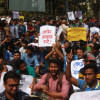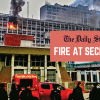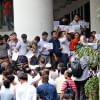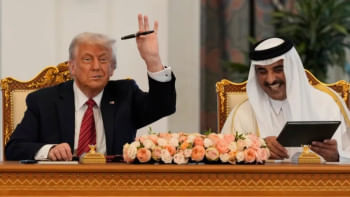Civil service 2.0: A prototype for reform

Civil service, inarguably, is one of the most, if not the most, lucrative career options in Bangladesh. The July uprising, which ultimately led to the ouster of the former regime, was initially triggered by the overturning of a Supreme Court order—which reinstated the farcical enactment of a disproportionate quota system in the civil service as well as other government jobs.
Although a lot can be said about the civil service obsession of the people in general, it is one of the guaranteed pathways towards upward mobility in Bangladesh, a country where socioeconomic advancement is quite restricted. However, the civil service of Bangladesh is in dire need of overhauling, not only in order to catch up with the international best practices but also for more efficiency and transparency.
The Bangladesh Civil Service (BCS) stands on the framework of the Imperial Civil Service (ICS), the colonial service in British India, which later succeeded into the Central Superior Services (CSP) in Pakistan. The BCS currently has 26 cadres, with 14 general and 12 technical cadres. The exam system ensues a preliminary exam of MCQs, followed by a written exam and a viva voce. A lot of questions might be raised regarding the current stature of the evaluation process; however, the greater problem lies in the organisational and operational framework within the civil service as well as the unequal power dynamics.
The Indian Civil Service—with the administrative and police services wielding perhaps a similar influence in the power structure when compared to the Administration and Police Cadre of Bangladesh—is quite different due to the fact that the civil service has rather a federal outlook compared to the more centralised nature of the BCS. The Indian Civil Service is trifurcated into All India Services, which include the administrative, police, and forest services; the central service, which includes departments such as foreign service, revenue service, and so on; and the state service, which includes the state police, state forest service, and so on. There is a state-level provision as well, which, given India's vastness, is quite rational.
For Bangladesh, adopting a federal structure in the governance structure might be quite cumbersome at the beginning, but a more federal stature in the civil service might be a pathway to that—as it would not only decentralise the administration but also reduce the Dhaka dependence when it comes to streamlining bureaucratic as well as regulatory obstacles. Dividing Bangladesh into a few regions and later adopting a regional as well as a central tier in civil service would remove a lot of administrative inefficiencies. However, adopting such a system would automatically translate to the remodelling of the current one, which might place a financial strain.
The British Civil Service, the one on which the BCS was customised, is quite decentralised as well, which only reinstates the case for a more federalist structure in our civil service, albeit taking into account the unique complexities and challenges. The British Civil Service also has a comprehensive performance appraisal system on a yearly basis, along with a policy for managing poor performance that encompasses multiple warnings followed by a dismissal decision if those warnings are not heeded. In Bangladesh, although in theory, there is a performance appraisal system, there is a lack of efficiency and implementation of the system.
Bangladesh's civil service is notoriously analogue and looking at some global examples of countries with some similarities in the socioeconomic fabric, such as Rwanda and Kenya, Bangladesh effectively has to digitise the civil service. Rwanda has an integrated electronic case management system, and Kenya has an eCitizen portal, and both these systems are instrumental in addressing the woes of the citizens, which would be difficult to confront.
For some highly technical positions that require specific operational skill sets, Bangladesh can appoint civil technocrats on a contractual basis, a practice that has been in vogue in many developed countries, such as Singapore and France. Although this practice has been adopted in some instances in Bangladesh, it has often been criticised for nepotism and politicisation, which invalidated the real purpose of the practice. Hence, the adoption of the practice in future instances should be subject to more scrutiny.
However, there is a lot of scope to be optimistic. Following the July uprising, as like many other fields, the Public Administration Reform Commission has proposed that promotions to positions of deputy secretary and above, alongside other cadres beyond the Administration cadre, be determined through examinations. This proposal, aiming to ensure that at least 50 percent of these positions are held by other cadres, despite some criticisms, can be a welcome move in order to curb the inter-cadre power imbalance.
Post August 5, there is a new rejuvenation regarding the idea of reform, of which the civil service is a big part. However, modernising the civil service by incorporating the context-specific good practices across the world is a dire necessity of this time.
Rassiq Aziz Kabir is research associate at the Research and Policy Integration for Development (RAPID).
Views expressed in this article are the author's own.
Follow The Daily Star Opinion on Facebook for the latest opinions, commentaries, and analyses by experts and professionals. To contribute your article or letter to The Daily Star Opinion, see our guidelines for submission.

 For all latest news, follow The Daily Star's Google News channel.
For all latest news, follow The Daily Star's Google News channel. 









Comments